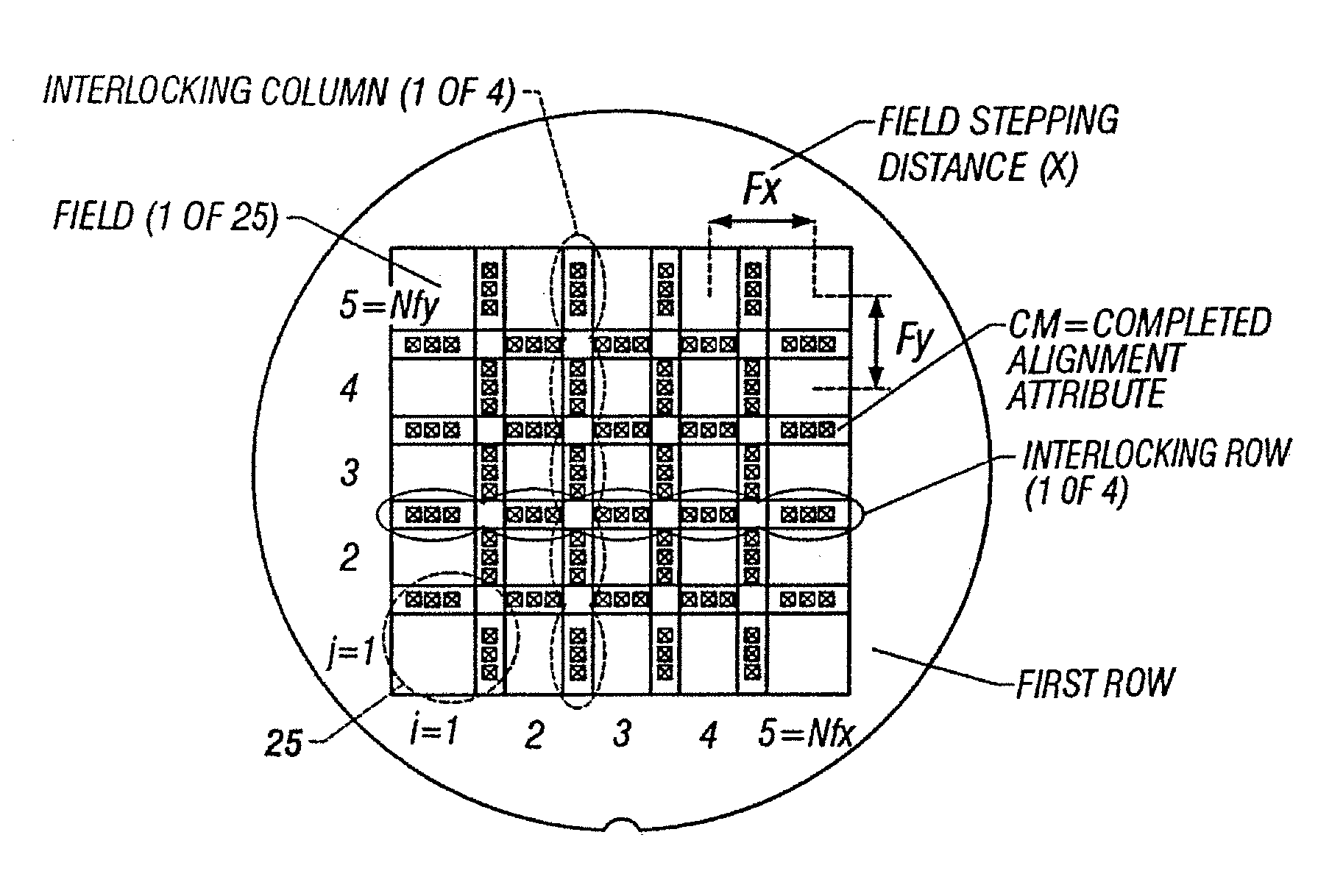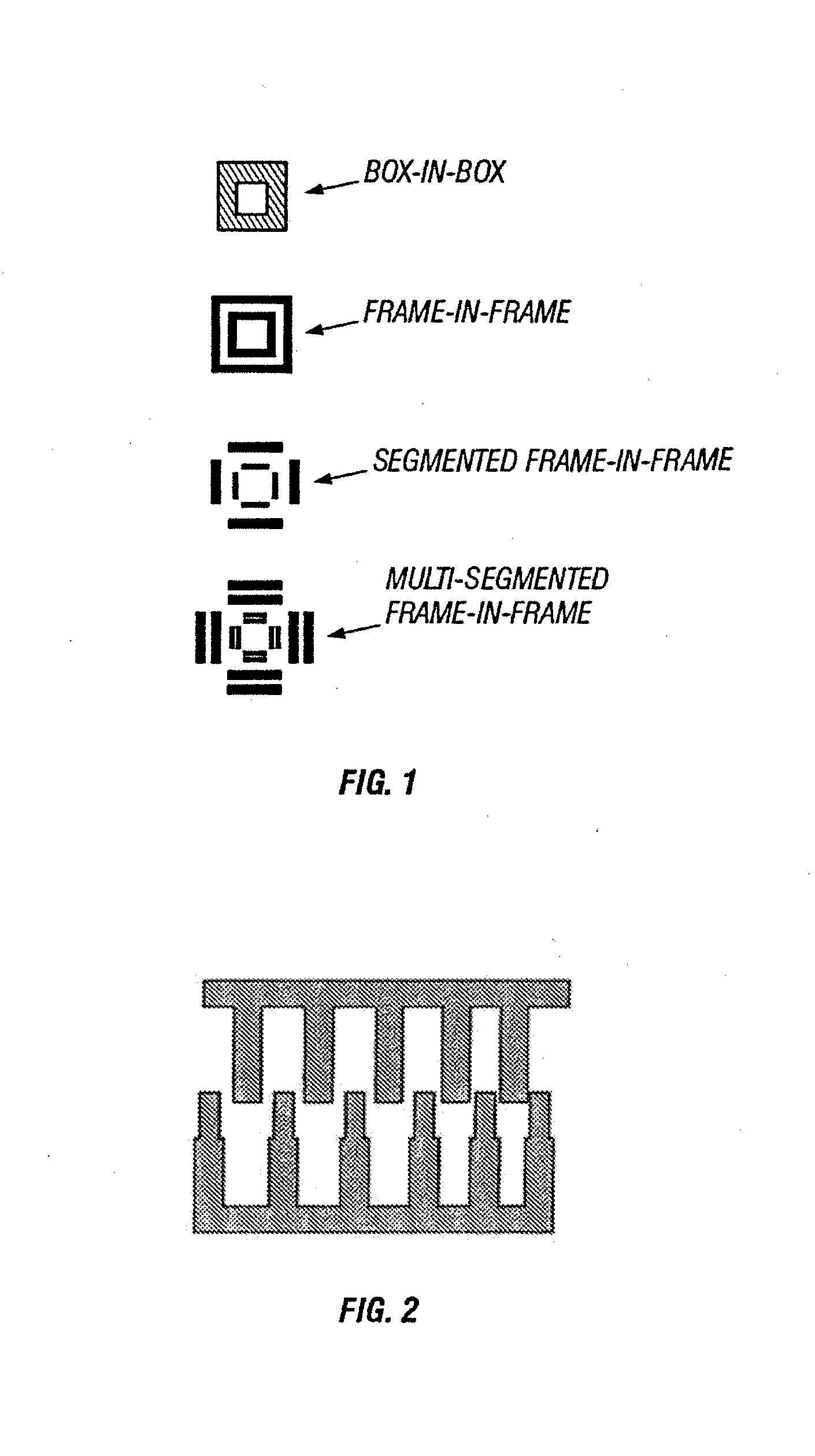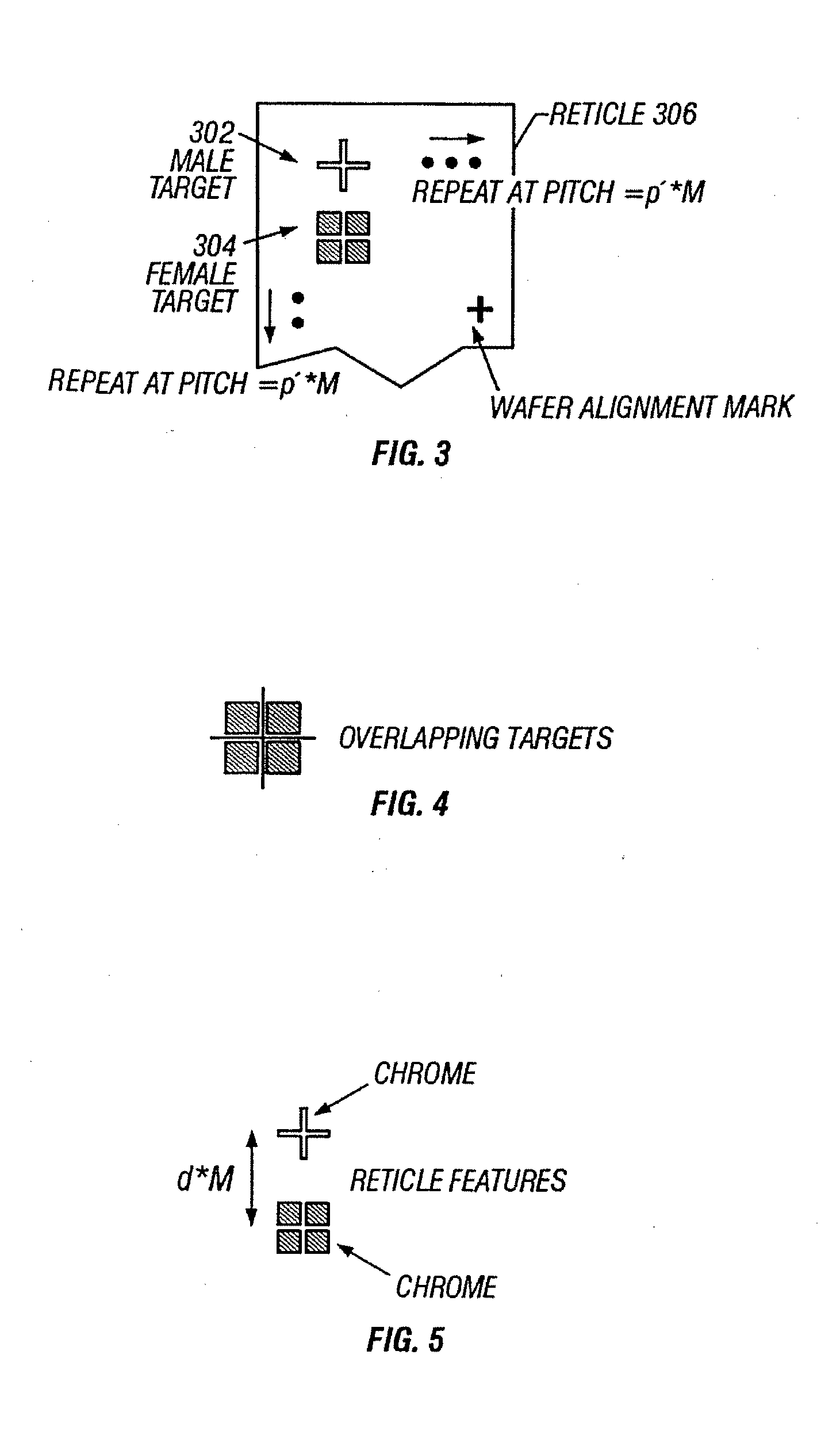Method And Apparatus For Self-Referenced Wafer Stage Positional Error Mapping
a technology of positional error mapping and self-reference, which is applied in the field of manufacturing processes requiring lithography, can solve the problems of reducing the feature size of the device, affecting the performance of photolithographic exposure tools or machines, and pushed to performance limits, etc., and achieves the effect of being easily employed
- Summary
- Abstract
- Description
- Claims
- Application Information
AI Technical Summary
Benefits of technology
Problems solved by technology
Method used
Image
Examples
1st alternate embodiment
1st Alternate Embodiment
[0150] Thus far, the preferred embodiment has been used to extract the components of overlay error associated with wafer stage distortion and yaw using a single wafer to fully account for all repeatable and non-repeatable effects of wafer stage placement error. To extract the repeatable effects of wafer stage placement error using the method of the preferred embodiment we must expose a number, N, of wafers on the same machine and average the resulting set of N wafer stage errors. We now describe a variation of the preferred embodiment that allows the user to extract the repeatable components of overlay error associated with wafer stage distortion and stage yaw in the presence of wafer stage non-repeatability using only one or a minimum number of wafers.
[0151] First, the overlay target reticle and photoresist coated wafer are loaded into the projection lithography tool (machine) and properly aligned as described in the preferred embodiment. Next, the machine ...
2nd alternate embodiment
2nd Alternate Embodiment
[0153] In this embodiment, see flow diagram FIG. 17, we also perform multiple exposure sequences to average out the effect of machine random stage error but now we provide the overlay reticle of FIG. 21A with a partially reflecting dielectric coating either on its top (non-chrome) or possibly bottom surface (chrome coated or machine optical object plane), as shown in FIG. 21B. A 95% reflecting dielectric coating applied to the overlay reticle means that if we do 40 exposure sequences at a dose of Eo each; the net effect is to expose the wafer with a dose of 2*Eo and to have effectively averaged over 20 or more exposures.
[0154] An advantage of this technique is that we are will not as limited by the machine's ability to do sub-Eo exposures. A further advantage of this technique is that since the exposure doses can be made at the same dose as used in production runs, the dynamics of the stage movement during the measurement sequence will be the same and theref...
PUM
| Property | Measurement | Unit |
|---|---|---|
| time | aaaaa | aaaaa |
| optical transmission | aaaaa | aaaaa |
| dielectric | aaaaa | aaaaa |
Abstract
Description
Claims
Application Information
 Login to View More
Login to View More - R&D
- Intellectual Property
- Life Sciences
- Materials
- Tech Scout
- Unparalleled Data Quality
- Higher Quality Content
- 60% Fewer Hallucinations
Browse by: Latest US Patents, China's latest patents, Technical Efficacy Thesaurus, Application Domain, Technology Topic, Popular Technical Reports.
© 2025 PatSnap. All rights reserved.Legal|Privacy policy|Modern Slavery Act Transparency Statement|Sitemap|About US| Contact US: help@patsnap.com



